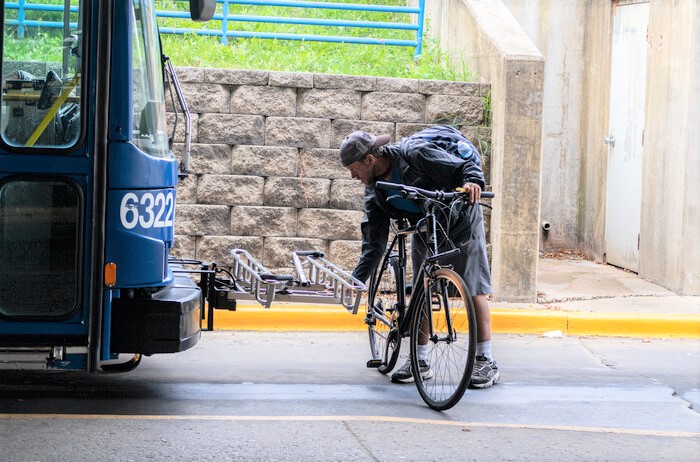Bikes on transit
The Chicago region is home to a transit network that connects many communities together. However, not everyone drives or has easy and direct access to a train station or bus stop, which can be miles away from someone’s home or job.
Active Transportation Alliance believes walking, biking, and transit go hand-in-hand. By having trains and buses accommodate bikes, people are able to commute to their destinations easier.
Bikes have been welcomed with open doors on trains and buses for years, but not everyone is aware of proper boarding procedures.
We’ve compiled a few important rules and tips for boarding a train or bus with your bike.
BIKES ON METRA TRAINS
Bikes are allowed on a first come, first served basis on weekdays during off-peak hours and on weekends.
Metra has temporarily relaxed its bikes on trains policy and is allowing bikes and folding e-scooters on all trains across all 11 lines.
Five bikes are allowed on each train and two on Metra Electric cars. Don’t forget to bring a bungee or something that can secure your bike to the designated wheelchair accessible area where seats fold up.
It’s important noting that Metra crew can prohibit bikes from boarding or have them get off during blackout dates, a case of overcrowding or the need to accommodate a person with disabilities.
Take a complete look at Metra’s Bicycle Policy.
BIKES ON CTA TRAINS
Bikes are allowed on L trains every day of the week, except during weekday rush hour from 7-9 a.m. and 4-6 p.m., specific holidays like July 4th and times of overcrowding.
At the station, your bike has the higher risk of getting stuck in the turnstile, especially if there’s a tall steel barrier gate. You should use a wheelchair accessible turnstile or find a CTA attendant to unlock the access gate for you.
It’s important to remember only two bikes are permitted on each train car and shouldn’t block entrances and aisles.
The CTA has a detailed guide on the do’s and don’ts taking your bike on the train.
BIKES ON CTA AND PACE BUSES
 CTA and Pace both allow folding bikes on board and the buses from both agencies are equipped with easy-to-use front bike racks giving you a more flexible commute that expands your bike network and lets you work around changes in the weather.
CTA and Pace both allow folding bikes on board and the buses from both agencies are equipped with easy-to-use front bike racks giving you a more flexible commute that expands your bike network and lets you work around changes in the weather.
There’s no extra charge for using the racks so you can just secure your bike and go!
The CTA has an extensive guide on how to use two different kinds of racks — Byk Rak and Sportswork — found on its buses and more Bike & Ride details, including bike parking.
Pace’s step-by-step guide with photos quickly shows you how to use the Sportswork rack for bikes with 20”-29” wheel size.
Here are a few tips.
- Approach the bus from the curbside after the bus is stopped.
- You must be able to lift your own bike.
- Alert the bus driver before you use the rack.
- Remove anything from the bike that would obstruct the bus driver’s view.
- Motorized bikes are prohibited
- You can lock your bike tire to its frame, but you cannot lock your bike to the bike rack.
Following these guidelines not only ensures your safety and everyone else’s but also your bike.
